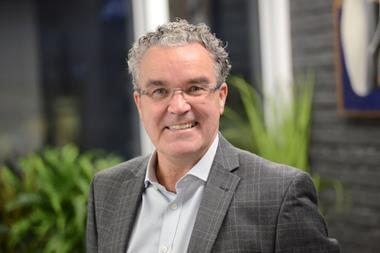Firms must share ‘best practices’ between themselves to better support their goals
Companies within the insurance industry must ”start sharing best practices” between themselves on how to improve key diversity and inclusion (D&I) benchmarks.

Axa XL head of distribution operations Baljinder Mahil said: “It’s not something we are in competition with one another on – [collaboration] will impact change going forward.”
But supporting D&I in the industry can only be achieved when companies know the basic information on how they are performing. For example, before firms can improve the ethnic diversity of their staff they must know the ethnic makeup of their workforce.
Insurance firms are increasingly seeking to collect ethnicity data about their staff in a drive to improve their diversity and inclusion performance.
These data allow them to measure certain diversity and inclusion benchmarks – such as representation – and enact campaigns to create more inclusive environments.
Speaking as part of a panel entitled ESG for brokers – what to do? at the Biba Conference 2023 last week (11 May 2023), Mahil said that tapping into the “power of network groups” can accelerate change in the collection of staff ethnicity data.
Mahil is also the co-chair and co-founder of Axa XL’s multicultural internal network and serves on the steering committee at the Insurance Cultural Awareness Network (Ican).
She highlighted that while this ethnicity “data is absolutely key” to understanding D&I challenges, its collection was “not possible if you try and drive it from the top down”.
“You can tell your colleagues what it is you’re doing, but the important bit is why you’re doing it and that’s how we bring people on the journey,” she said.
“We actually used the multicultural [internal] network to go out to the organisation and talk about why we needed that data, why we needed to collect ethnicity data, rather than having that being top down driven from HR teams.”
At Axa XL, Mahil and her team started with a 28% declaration rate on ethnicity from staff – but after “talking to teams, going to town halls and meeting people for lunch and learns” the business managed to increase its declaration rate to 78%.
In the following year, the insurer was able to publish an ethnicity pay gap report using the data.
The session Mahil spoke at was chaired by Weightmans ESG manager Abhay Srivastava.
She was joined by Yutree Insurance director Laura Hancock, Zurich head of retail David Nichols and ABI chief sustainability officer Ben Howarth.
Howarth said: “I completely agree about the brilliant role of networks. If you aren’t in one of those groups, join those networks – they are really positive.”
Nichols, meanwhile, noted that “a rich source of getting an [ESG] agenda together in terms what steps you want to take” was “dialogue” with the business’ customer base.
He explained: “[Customers] will be facing the same challenges, the same discussions and actually you can start to [use that to] tailor how you offer your services, your products and some of your support based on what your customers are telling you.”
Regulatory clampdown
Hancock explained that Yutree and the Chartered Insurance Institute board recently hosted a roundtable at which insurance solicitors spoke about litigation “coming down the road” for companies that had not fulfilled their ESG requirements, as well as mandatory disclosures.
Read: Unpacking the controversial issue of an ‘ethnicity penalty’ in car insurance premiums
Read: Emily Fraser – Neurodiversity at work, for the greater good
Explore more diversity and inclusion-related content here or discover other news stories here
“It’s not a fear thing, but it’s important that you understand and can appreciate what it means to be left behind [on ESG issues as an insurance firm].
“The regulator will start asking for data, so that is why it’s really important you understand your own business, you [make] changes and you’re able to think about reporting on those changes.”
Considering existing frameworks and tools in the UK insurance industry that she believes are beneficial to collecting this data, Mahil championed the African Caribbean Insurance Network (ACIN) and its six-step framework.
She added: “The important thing is to just pick one [method of collecting data], get started and start doing that materiality assessment”, she said.
Mahil explained that “the power of [ACIN’s framework] is you’ve got the foundations across culture, data, recruitment and community set out very simply”.
“We literally lifted and shifted that into our organisation and we built out our plan and strategy around that”, she said.
“What that helped us to do was educate the business, but also galvanise a lot of the employees and also the senior leadership team because it was something that was already being used by the industry – you’re creating a benchmark.”
Hosted by comedian and actor Tom Allen, 34 Gold, 23 Silver and 22 Bronze awards were handed out across an amazing 34 categories recognising brilliance and innovation right across the breadth of UK general insurance.




















































No comments yet